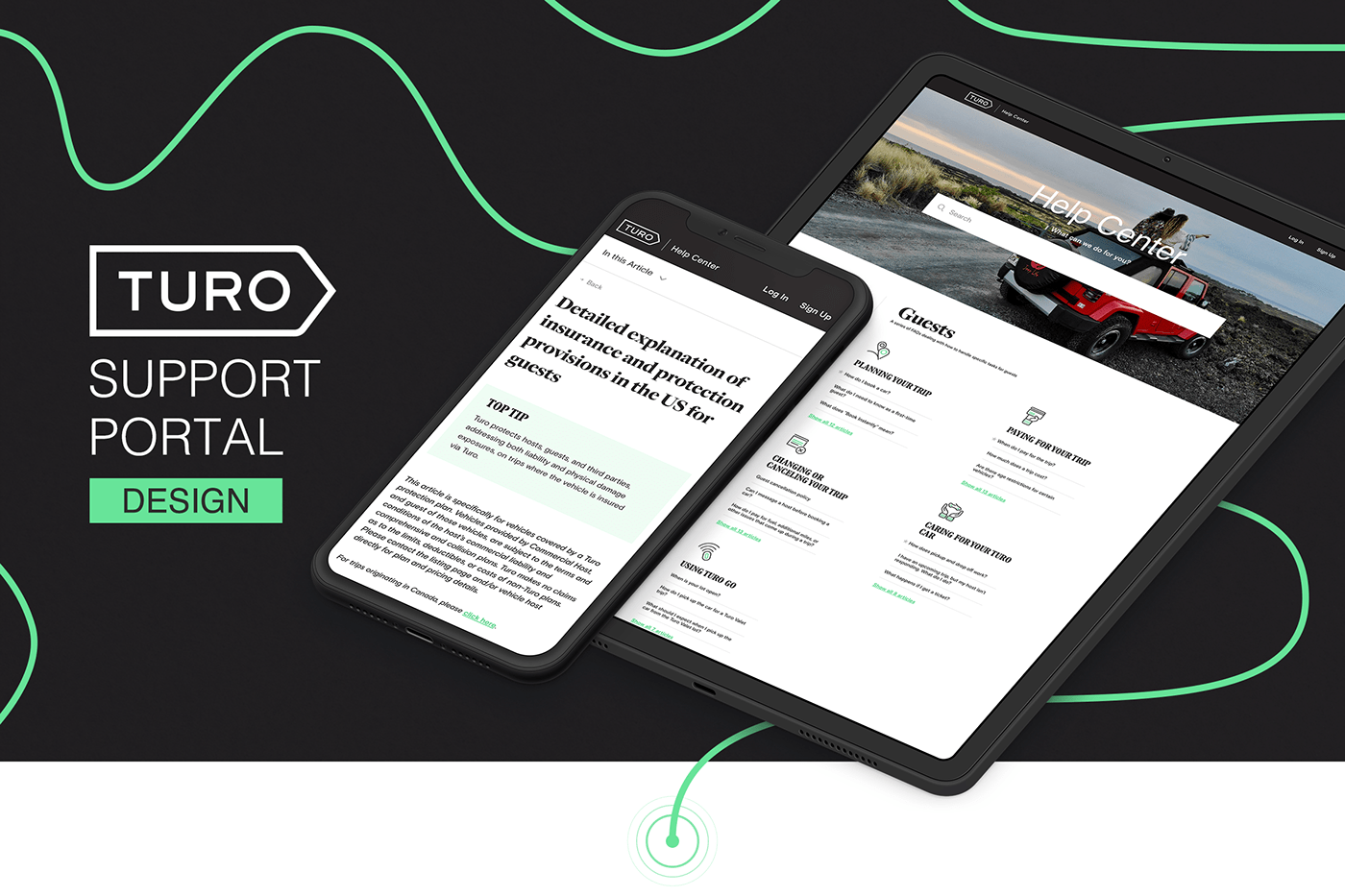
About Turo support portal
Turo is a San Francisco based peer-to-peer carsharing company. The company allows private car owners to rent out their vehicles via an online and mobile interface. The service has over 4 million registered users and 170,000 privately owned cars available for rental. Turo reached out to us to help redesign their Customer Support experience that was hosted on the Zendesk platform. It was a unique opportunity to define what a 5-star, custom branded support experience looks and feels like.
The main challenge they faced with their existing support portal was that users weren't able to find any information themselves so they had to create ticket requests. Tickets are crucial and should be addressed as soon as possible, but the high-volume of tickets overloaded the support team and they were falling behind. Our goals were twofold: increase the "self-serving" score and design a fresh, Turo branded look for the support portal.
Problem statement
We began our collaboration with Turo by examining their support center’s most up-to-date analytics. At the time of project kick-off, we learned that 53% of users left the support center at the home page, 26% of users utilized alternative resources and only 21% of users couldn’t find what they were looking for. By way of discussions with Turo’s team and our initial discovery, we determined the main areas of improvement and set our goals. The main target was to improve the “self-service” score by 30% and in effect reduce the number of tickets created.
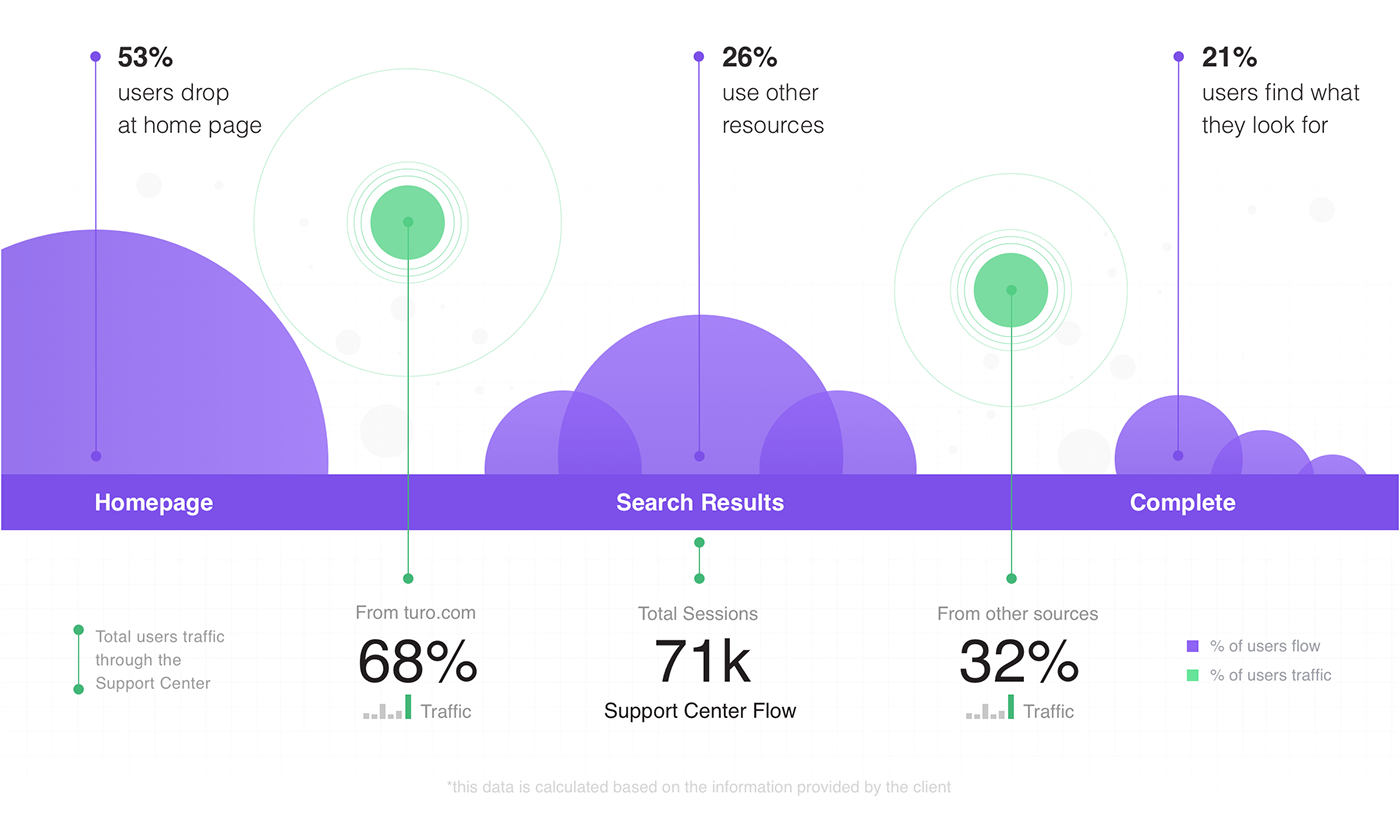
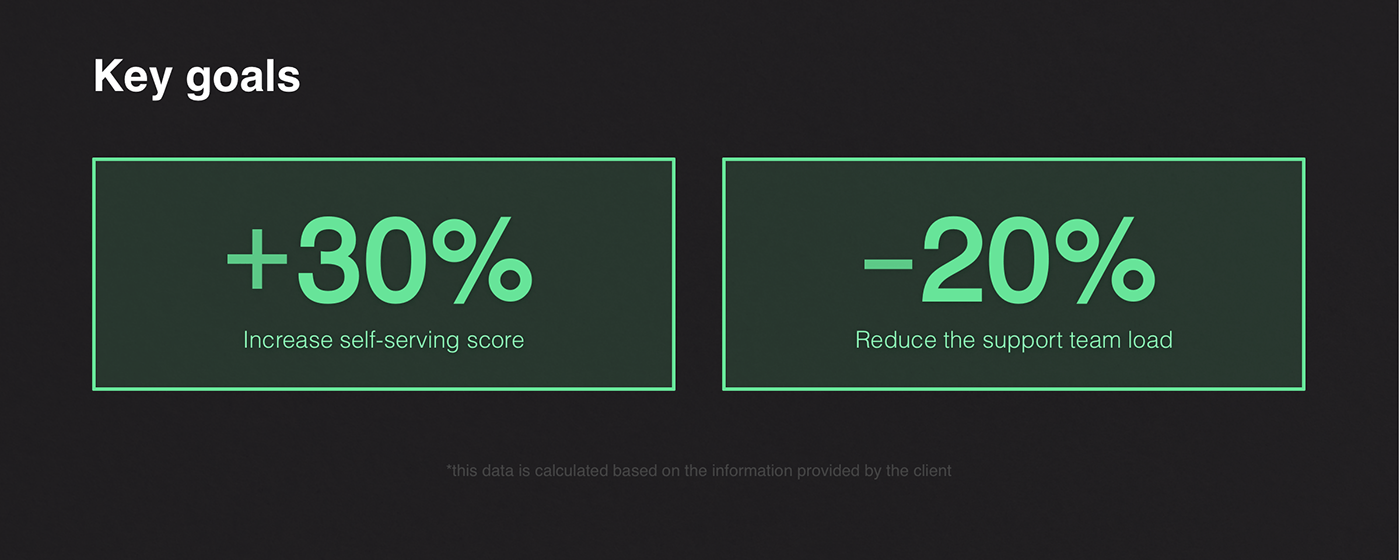
Design consistency
All designers know and understand the importance of maintaining brand consistency.
Brand consistency is the act of designing a memorable and recognizable style that, if seen, is almost immediately connected to the brand. Nowadays, it’s even becoming a verb in daily conversation.
The support portal is a major part of a brand’s image. Its purpose is to be passively informative and also directly helpful to users when they face issues. A support portal should be welcoming and friendly and the messaging should be empathetic.
Turo already had a strong brand consistency in place, and we used it across all of the elements that we came up with during the redesign.
Brand consistency is the act of designing a memorable and recognizable style that, if seen, is almost immediately connected to the brand. Nowadays, it’s even becoming a verb in daily conversation.
The support portal is a major part of a brand’s image. Its purpose is to be passively informative and also directly helpful to users when they face issues. A support portal should be welcoming and friendly and the messaging should be empathetic.
Turo already had a strong brand consistency in place, and we used it across all of the elements that we came up with during the redesign.
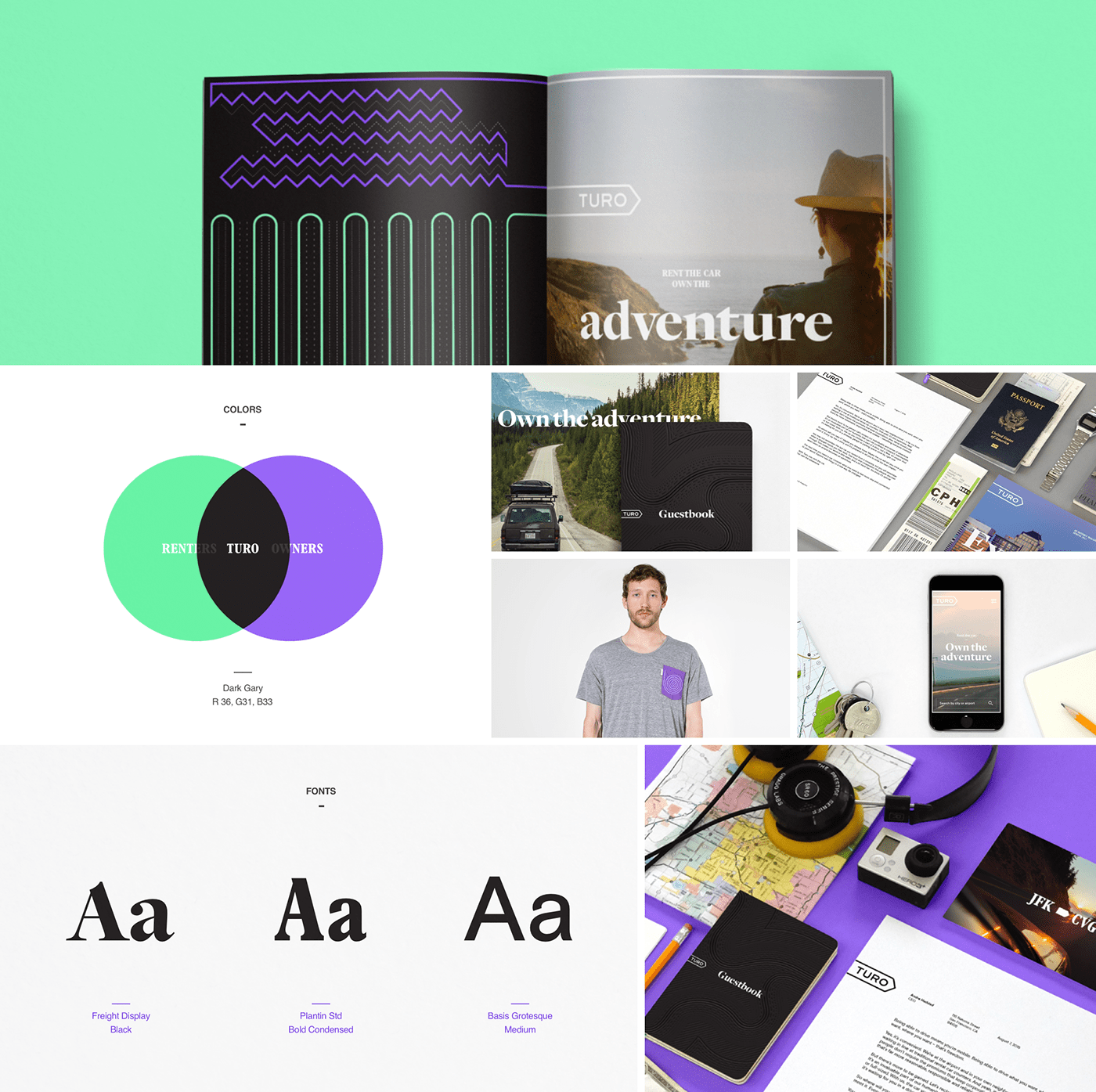
Extension of visual identity
For the categories and information architecture redesign, we worked on improving the iconography for each category to help users be able to clearly differentiate categories and easily perceive their purpose. Visuals are far easier to understand and much faster to process than words. At the same time, in our case, they augmented our work to make the support portal more approachable and friendly. As an additional visual element, we designed footer illustrations that were based on Turo’s business concept of providing an easy way to rent any type of car for any occasion.

User experience and visual layout
It would not have been possible without the great people from Turo who supported us throughout the project.
Most of our ideas regarding improvements were similar to one another. We started from the most obvious, highest priority pain points and worked our way down the list.
Most of our ideas regarding improvements were similar to one another. We started from the most obvious, highest priority pain points and worked our way down the list.
We enhanced the main search box on the support landing page, redesigned the page’s structure, categorized the main sections and visitor types, added supportive icons to the most viewed articles and improved navigation within each article.

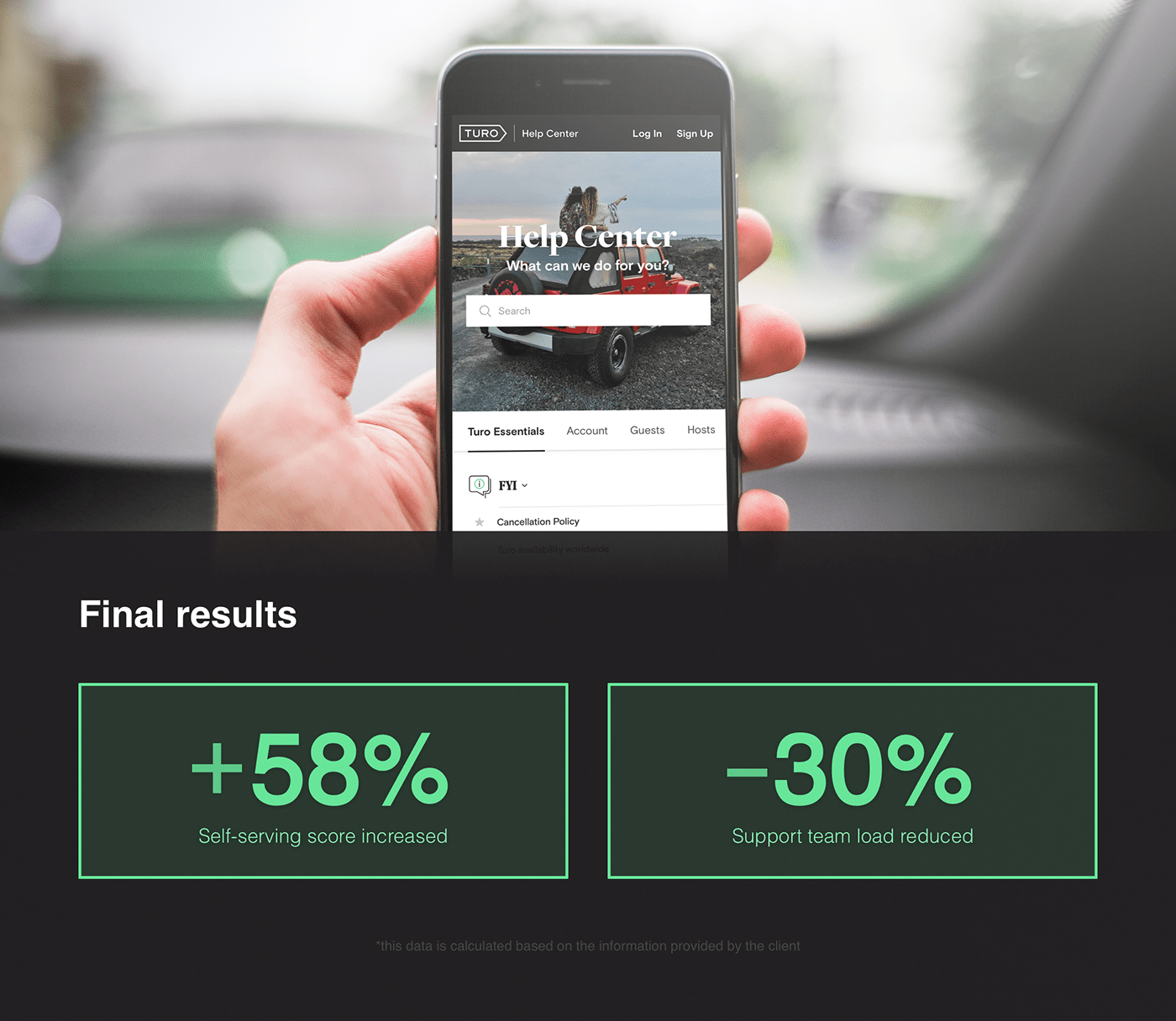

Thanks for watching!
As a result of the redesign, the navigation and usability of the support experience improved. The "self-service" score increased by 58% — an incredible outcome. The updated search box and articles layout increased the content readability by 4X. All of this helped to off-load the support team’s overflow by 30% and help them get back on track.











